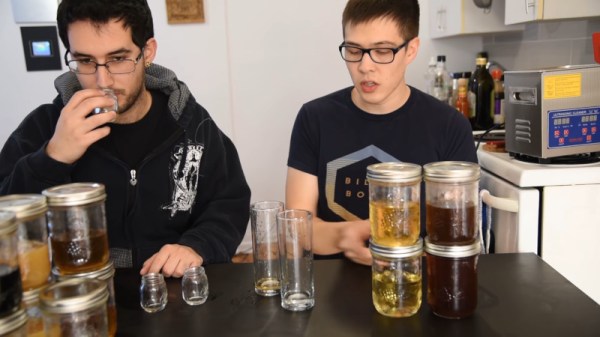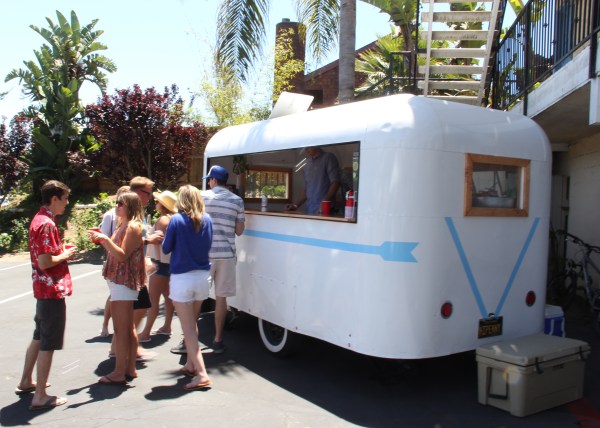[Federico Musto], one of the Arduinos in the Arduino vs. Arduino saga (which finally came to an end last September) may have fabricated his academic record. This news comes from Wired, providing documents from the registrars at MIT and NYU stating [Musto] never attended these institutions. Since this story came out, [Musto] has edited his LinkedIn, listing his only academic credential as a kindergarten in Torino, Italy.
[shininglaser] built a tinnitus machine. What’s a tinnitus machine? It’s a device that, when activated, produces this sound: eeeeeeeeeeeeeeeeeeeeeeeeeeeeeeeeeeeeeeeeeeeeeeeeeeeeeeeeeeeeeeee. [shininglaser] built this tinnitus machine out of a pair of speakers, a cardboard box, a few batteries, and some sort of board with an epoxy-coated blob. We have no idea what the circuit looks like, but you could do this with any normal signal pulsing at around 15-18kHz (address pins on a CPU for bonus nerd cred) or a simple 555 timer.
This is a hackers bar. This bar in Roppongi, Tokyo is, “a place where you can enjoy live programming and business making…. The term ‘hacker’ is applied to someone who possesses top skills and knowledge to provide innovative and quick solutions even to the most difficult tasks.” It appears they have daily events/talks for JavaScript, Python, R, and Swift.
Captain Crunch needs our help. He’s facing some serious surgery, and even if it’s successful, there’s going to be a lot of stuff insurance doesn’t cover.
We can use Libreboot again. A few months ago, the Libreboot project left the GNU project after an issue with an employee at the Free Software Foundation. Hackaday chose not to report on this only because the accusations levied against the FSF were hearsay. I should emphasize this: the only reason we chose not to report on this is because the accusations were hearsay. Now the Libreboot project is under more democratic management and they’re working on the Thinkpad X220, the greatest Thinkpad of all time. Neat.
Here’s a quick and easy tip to get metal fume fever. Build a foundry out of a galvanized trash can! No, don’t worry about that galvanized coating, it’ll burn off. Oh, he’s doing this indoors. What’s carbon monoxide? Why am I sleepy?



















